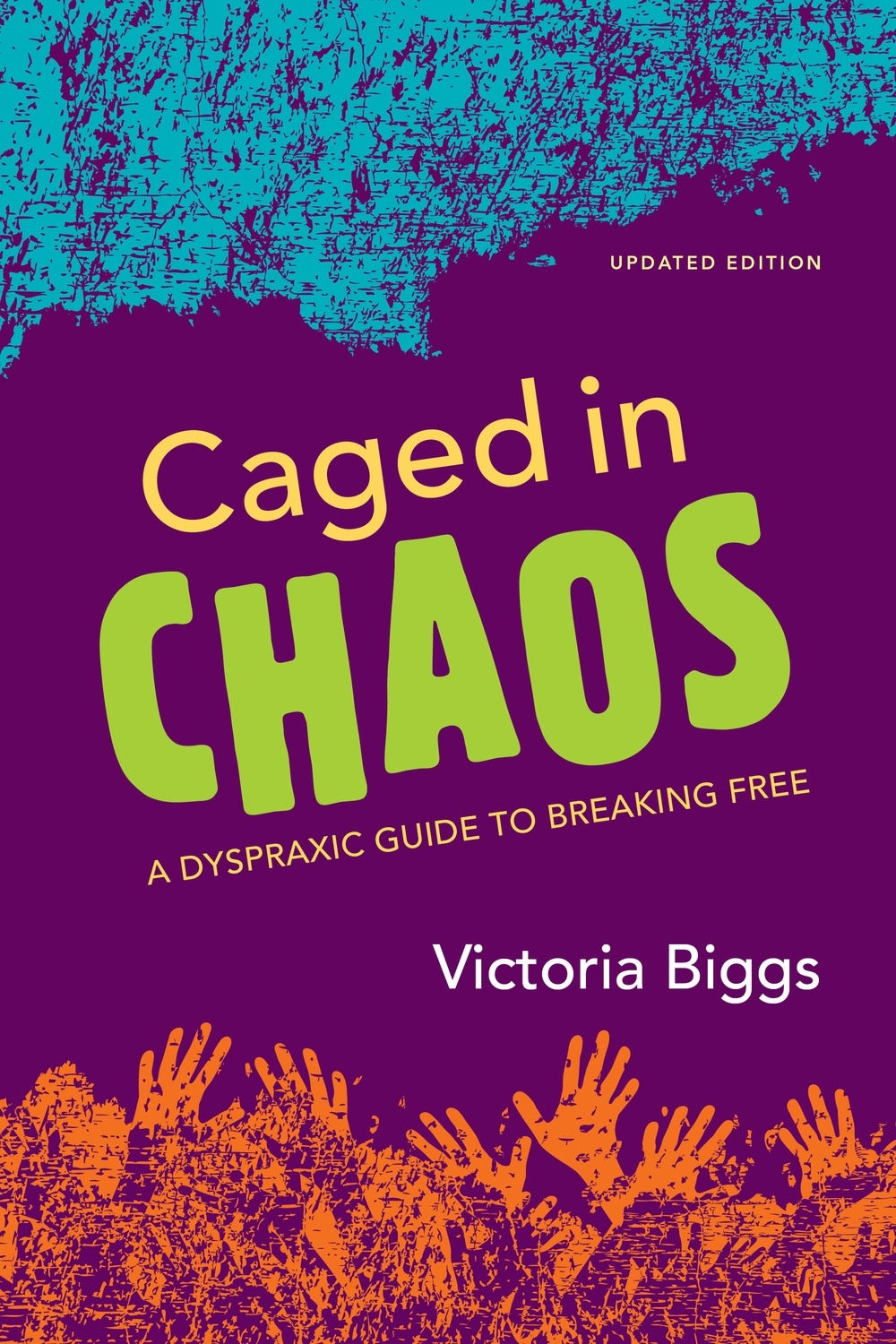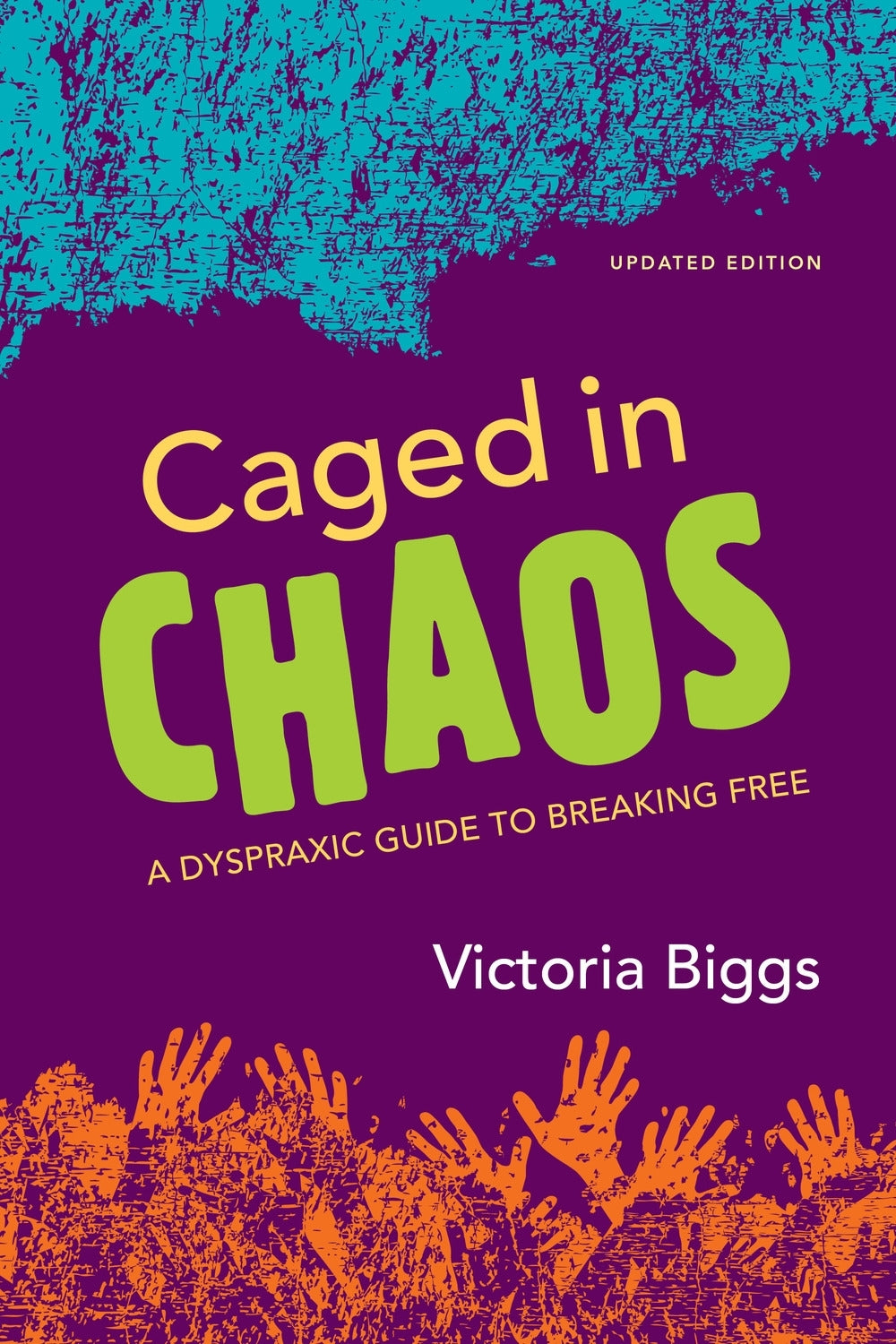

Press Reviews
From the foreword by Jo Todd, CEO of Key 4 Learning
Caged in Chaos puts into words what professionals have been unable to, articulating the voices of many of the young people I have had the privilege of working with. The book touches the frustration, pain, humour, and resilience that come with having a cognitive profile consistent with dyspraxia. Adult readers can hear the echoes of their own experience and the young are reassured they are not alone. The pick and mix solutions for day-to-day issues gives just the right level of practical advice.
Maureen Boon, former Headteacher and author of Understanding Dyspraxia and Can I Tell You About Dyspraxia?
Caged in Chaos is a truly inspiring but humorous book written by a teenager which is aimed at helping other teenagers with dyspraxia. It is a true survivor's guide to how to succeed and follow your dreams regardless of the things which hold you back. I would recommend this book to all young people regardless of their backgrounds. Victoria is a great role model and bravely writes about subjects which most teenagers would keep silent about such as how to deal with periods, first romantic crushes and wardrobe malfunctions. It should be essential reading in all secondary school libraries.
Jessica Starns, founder of Dyspraxic Me, a support group for young people with dyspraxia
Written when Victoria was 16 years old, this book is her personal story and one that young people with dyspraxia will all relate to. Inside the book there are many wonderful quotes from people who have dyspraxia. It's fun, easy to read and creatively written, full of tips to help with home life and school.
The Higher Education Academy
Praise for the first edition: 'I am currently developing new academic programmes and I hoped by reading a personal account of dyspraxia that I would be able to develop some understanding and insight into the condition, which would ultimately inform my teaching. I was not disappointed. This is a book that leaves you with a very strong impression of the impact of dyspraxia on people's lives.'
Dyspraxia News
Caged in Chaos is peppered with illustrations and words written by children and young people with dyspraxia and other learning difficulties, and it is easy to understand how helpful Victoria's insights and explanations will be to other dyspraxics, their parents, teachers and other people involved in their lives. The advice Victoria gives is practical and down to earth; she deals with everyday issues such as social skills, body language, health and hygiene, puberty, relationships and family life.
NAPOT (National Assessment of Paediatric Occupational Therapy)
This very informative book, about a young adult who has dyspraxia, is a much needed addition to my library. Although I have worked with children of all ages who have dyspraxia, it is difficult to put yourself in their shoes. The very obvious physical difficulties can be understood, although the effect this has on their self-confidence and esteem is not so obvious. However, the author clearly describes how her life has evolved and the impact her poor organisational skills have had on every aspect of her life. She offers very practical "tips" which have helped her through the very difficult period of life known as adolescence... It is a book I will be recommending to parents and other professionals who work with young people and this disorder. It will be extremely useful for therapists (occupational therapy, physiotherapy and speech and language) who are new to this field of paedriatrics. Additionally, I feel that young people who have dyspraxia will also use it as a resource to help them to validate their experiences and feel that someone has understood explicitly what they are experiencing. It is already a well-thumbed book!
Good Autism Practice
The 16-year-old author writes with a spirited and humorous style, using a mature approach to a vast range of topics and revealing her personal strengths and weaknesses with quirky honesty... Ms Biggs' advice is rich and relevant but realistic and practical. I have rarely read a book which offers such a vast range of useful strategies... The author skilfully acknowledges the issues which family members might have while growing up with someone who has dyspraxia, and her recommendations to teachers span generic topics as well as specific curriculum subjects. Her empathy with and support for those who have dyspraxia oozes with apparent ease from everything she writes and I would be surprised if anyone fails to feel empowered and enriched by what she has to offer.
The Teacher, magazine of the National Union of Teachers
Written by a 16 year old with dyspraxia, this book provides a profound and humbling insight into an often misunderstood condition. It is packed with useful advice on how it feels to be dyspraxic and how to understand the physical, social, emotional and psychological aspects of developmental co-ordination disorder. The effects of short term memory, clumsiness and disorganisation are explored along with bullying, self-esteem and loneliness. The style is conversational, with examples and life experiences from a number of young dyspraxics. Chapters on a survival guide to school, making the grade, and coping with growing up are most useful. Dyspraxia has been described as lying in a parallel universe. This book explores a galaxy of ideas, thoughts, emotions and supportive actions for the classroom and beyond.
SNIP
As well as the author's individual experience, the book refers to others dyspraxics who are coping with difficulties in a variety of situations... The book also provides tips for teachers to support them in providing reasonable adjustments... the book concludes with advice on matters related to further education; moving into the world of work and day to day living. There is a useful section on addresses and websites were further information can be found... This book will help readers to understand the experiences of those who live with dyspraxia. it is an inspiring read tingled with both humour and sadness.
Jacqueline Martin
ask - C.A.R.E. CentreThis charming and fun book offers a comprehensive account of dyspraxia together with plenty of practical tips and pithy quotes from other dyspraxic teenagers recounting their personal experiences... includes a list of useful addresses and websites for information and support on bullying, advocacy, driving, education, independent living and mental health. i highly recommend "Caged in Chaos" to all those affected or involved with dyspraxia, particularly parents and teachers.

